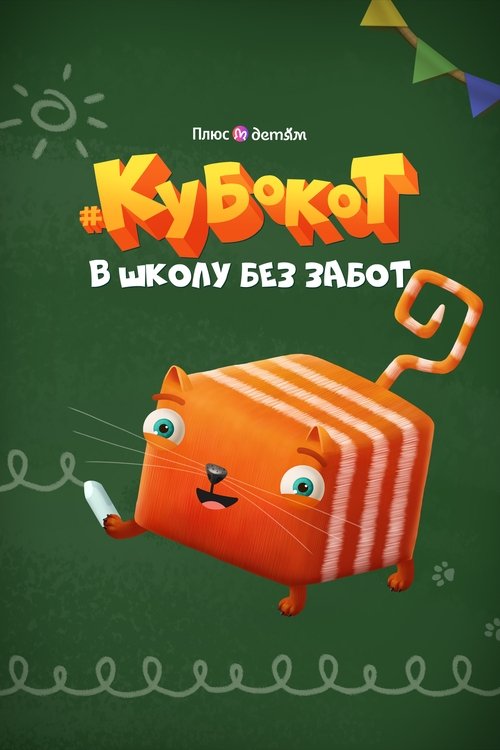
Ask Your Own Question
What is the plot?
In a vibrant, animated world, the story begins with Peter, a young boy with a spirit of adventure, living with his grandfather near a lush forest. The opening scene establishes Peter's curiosity and bravery as he dreams of exploring the woods, despite his grandfather's warnings about the dangers that lurk there, particularly a menacing wolf. The grandfather is protective and often scolds Peter for his reckless behavior, emphasizing the importance of staying safe.
One sunny morning, Peter decides to venture into the forest, leaving behind the confines of his home. He is filled with excitement and a sense of freedom as he steps into the greenery. As he explores, he encounters various animals, including a playful bird, a cautious duck, and a clever cat. Each animal has its own personality, and they interact with Peter, showcasing their unique traits. The bird is adventurous and encourages Peter to take risks, while the duck is more timid and worries about the wolf.
As Peter and his new friends play, the atmosphere shifts when they hear a rustling in the bushes. Tension builds as they realize it could be the wolf. Peter's heart races with a mix of fear and exhilaration. He decides to confront the situation rather than run away, driven by his adventurous spirit. The animals express their concerns, but Peter reassures them, determined to prove his bravery.
Suddenly, the wolf appears, a large and intimidating figure with sharp teeth and a menacing growl. The animals scatter in fear, but Peter stands his ground. He devises a plan to capture the wolf, believing that if he can outsmart it, he can protect his friends and prove his courage. He instructs the bird to distract the wolf while he sets a trap using a rope and a sturdy branch.
The bird flits around the wolf, chirping and taunting it, drawing its attention away from Peter. The wolf, intrigued and annoyed, chases after the bird, allowing Peter to sneak closer to his trap. As the wolf lunges at the bird, Peter springs into action, pulling the rope to ensnare the wolf. The wolf struggles against the trap, growling and snapping, but Peter remains focused, his heart pounding with adrenaline.
In a tense moment, the wolf breaks free from the trap, and a chase ensues. Peter runs through the forest, dodging trees and leaping over obstacles, with the wolf hot on his heels. The animals watch in horror, unsure of what to do. Peter's determination fuels his speed, and he leads the wolf into a clearing where he has set up a second trap.
As the wolf charges at Peter, he quickly maneuvers to the side, causing the wolf to stumble into the trap. The wolf is caught, but it is furious and thrashes about, trying to escape. Peter, feeling a mix of triumph and fear, approaches cautiously. He realizes that the wolf is not just a monster but a creature driven by hunger and instinct.
In a moment of empathy, Peter decides to release the wolf instead of keeping it trapped. He understands that the wolf is part of the forest's ecosystem and deserves a chance to live. The animals are shocked by Peter's decision, but he explains that true bravery is not just about conquering fear but also about understanding and compassion.
As Peter frees the wolf, it pauses, looking at Peter with a mix of surprise and respect. The wolf then retreats into the forest, leaving Peter and his friends safe. The animals gather around Peter, celebrating his bravery and wisdom. They realize that they can coexist with the wolf and that Peter's actions have changed their perspective on fear and courage.
The story concludes with Peter returning home, where his grandfather awaits. Peter shares his adventure, and instead of scolding him, the grandfather listens with pride. The bond between them strengthens as they both acknowledge the importance of bravery, understanding, and the beauty of the world around them. The final scene shows Peter looking out into the forest, a smile on his face, ready for whatever adventure comes next.
More TV Shows Like This
Browse All TV Shows →What is the ending?
In the ending of "The Adventures of Peter and Wolf," Peter successfully captures the wolf with the help of his friends, the bird and the cat. They work together to outsmart the wolf, leading to a triumphant moment for Peter. The story concludes with Peter's bravery being celebrated, and the wolf is taken away, leaving the forest safe once more.
As the final scenes unfold, the atmosphere is charged with tension. The sun begins to set, casting a golden hue over the forest. Peter, emboldened by his earlier adventures, stands at the edge of the clearing, his heart racing with determination. He knows that the wolf poses a threat not just to him but to all the creatures of the forest.
Scene 1: The Capture Plan Peter gathers his friends, the clever bird and the sly cat, to devise a plan. The bird flits around excitedly, suggesting they use their wits to outsmart the wolf. The cat, with a more cautious demeanor, expresses concern about the wolf's cunning nature. Peter reassures them, his eyes sparkling with confidence. He believes that together, they can confront the wolf and protect their home.
Scene 2: The Confrontation As night falls, the trio stealthily approaches the wolf's lair. The forest is alive with sounds, the rustling leaves and distant animal calls heightening the tension. Peter leads the way, his heart pounding with a mix of fear and excitement. They spot the wolf lounging lazily, unaware of the impending confrontation. Peter signals to his friends, and they prepare to execute their plan.
Scene 3: The Trap The bird distracts the wolf by swooping down and taunting him, drawing his attention away from Peter and the cat. The wolf, irritated and hungry, snaps at the bird, but it is too quick. Meanwhile, Peter and the cat sneak around to set a trap. They use a net made from vines and branches, carefully positioning it near the wolf's resting spot. The tension builds as they wait for the right moment.
Scene 4: The Capture With a final, daring swoop, the bird leads the wolf into the trap. The wolf, caught off guard, lunges forward but is ensnared by the net. Peter and his friends cheer in triumph, their plan having worked flawlessly. The wolf struggles, growling in frustration, but Peter stands firm, a mix of relief and pride washing over him. He realizes that bravery and teamwork have led to their victory.
Scene 5: The Resolution As dawn breaks, the forest is bathed in soft light. Peter, the bird, and the cat stand together, looking at the captured wolf. They decide to take him to the nearby village, where he can no longer threaten the forest creatures. The wolf, now subdued, glares at them, but Peter feels a sense of compassion. He understands that even the wolf has a place in the world, albeit not in their forest.
Scene 6: Celebration The final scene shows Peter returning to the forest, greeted by the other animals who celebrate his bravery. They gather around him, their eyes shining with admiration. Peter feels a deep sense of belonging and pride, knowing that he has protected his friends and their home. The bird chirps joyfully, and the cat purrs contentedly, reinforcing their bond. The camera pans out, capturing the vibrant forest, now safe and peaceful, as the sun rises higher in the sky.
In the end, Peter's bravery and cleverness shine through, and he learns the importance of friendship and teamwork. The wolf, while captured, serves as a reminder of the balance of nature, and the story closes on a hopeful note, with the forest thriving once more.
Is there a post-credit scene?
In "The Adventures of Peter and Wolf" produced in 2020, there is indeed a post-credit scene that adds a whimsical touch to the story. After the main credits roll, the scene opens with a serene view of the forest, bathed in the soft glow of twilight. The camera pans slowly, capturing the gentle rustling of leaves and the distant sounds of nature settling down for the night.
Suddenly, the scene shifts to a playful interaction between Peter and the Wolf. They are seen sitting side by side on a grassy knoll, both looking surprisingly relaxed and at ease with one another. Peter, with a mischievous grin, nudges the Wolf playfully, and the Wolf responds with a mock growl, but there's a twinkle in his eye that suggests a newfound friendship rather than animosity.
As they share this moment, a few of the other forest animals, including the bird and the duck, cautiously approach. They observe the duo with a mix of curiosity and skepticism. The bird flutters down, landing on Peter's shoulder, while the duck waddles up, quacking nervously. Peter, sensing their hesitation, gestures for them to join in, inviting them to share in the camaraderie.
The scene concludes with a light-hearted moment where the Wolf pretends to chase the bird, who flits away just in time, while Peter laughs, showcasing the bond that has formed among them. This playful interaction emphasizes the themes of friendship and understanding that permeate the series, leaving viewers with a warm feeling as the screen fades to black.
What motivates Peter to venture into the woods despite the dangers?
Peter is driven by a sense of adventure and curiosity, longing to explore the world beyond his grandfather's protective grasp. His internal conflict is marked by a desire for independence and a need to prove his bravery, which ultimately leads him to confront the wolf.
How does the relationship between Peter and his grandfather evolve throughout the story?
Initially, Peter's grandfather is protective and dismissive of Peter's adventurous spirit, fearing for his safety. As the story progresses, the grandfather's concern transforms into a grudging respect for Peter's courage and resourcefulness, especially when Peter successfully captures the wolf, showcasing his growth.
What role does the bird play in Peter's adventure?
The bird serves as both a companion and a catalyst for Peter's actions. It embodies freedom and playfulness, encouraging Peter to take risks. The bird's interactions with Peter highlight themes of friendship and loyalty, as it bravely assists Peter in his quest to capture the wolf.
How does the wolf's character contribute to the tension in the story?
The wolf is portrayed as a cunning and menacing figure, representing the ultimate threat to Peter and his friends. Its presence creates a palpable tension, as it stalks the characters, forcing them to confront their fears. The wolf's intelligence and predatory instincts challenge Peter's bravery and resourcefulness.
What is the significance of the duck in the story, and how does it interact with the other characters?
The duck adds a layer of humor and lightheartedness to the narrative, often clashing with the more serious characters. Its interactions with the wolf highlight the danger present in the story, as the duck's naivety contrasts with the wolf's predatory nature, ultimately leading to a pivotal moment that underscores the stakes of Peter's adventure.
Is this family friendly?
"The Adventures of Peter and Wolf," produced in 2020, is designed to be a family-friendly adaptation of the classic tale. However, there are a few scenes and aspects that might be considered potentially objectionable or upsetting for very young children or sensitive viewers:
-
Predatory Behavior: The character of the wolf is depicted as a predator, which may evoke fear or anxiety in younger viewers. His pursuit of other characters can create tension.
-
Chase Scenes: There are moments of suspense where characters are chased or in danger, which could be intense for some children.
-
Conflict and Danger: The story involves themes of conflict, including the struggle between Peter and the wolf, which may be unsettling for sensitive viewers.
-
Emotional Moments: Characters experience fear, worry, and moments of distress, which could resonate emotionally with children who are particularly empathetic.
Overall, while the show is crafted to be engaging and entertaining for families, these elements may require parental guidance for younger audiences.






















